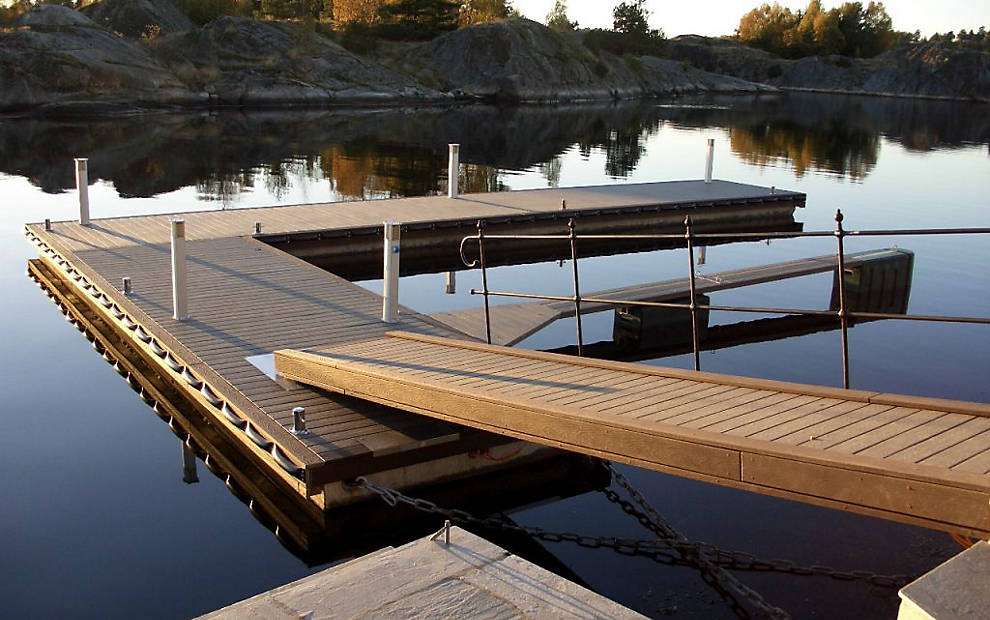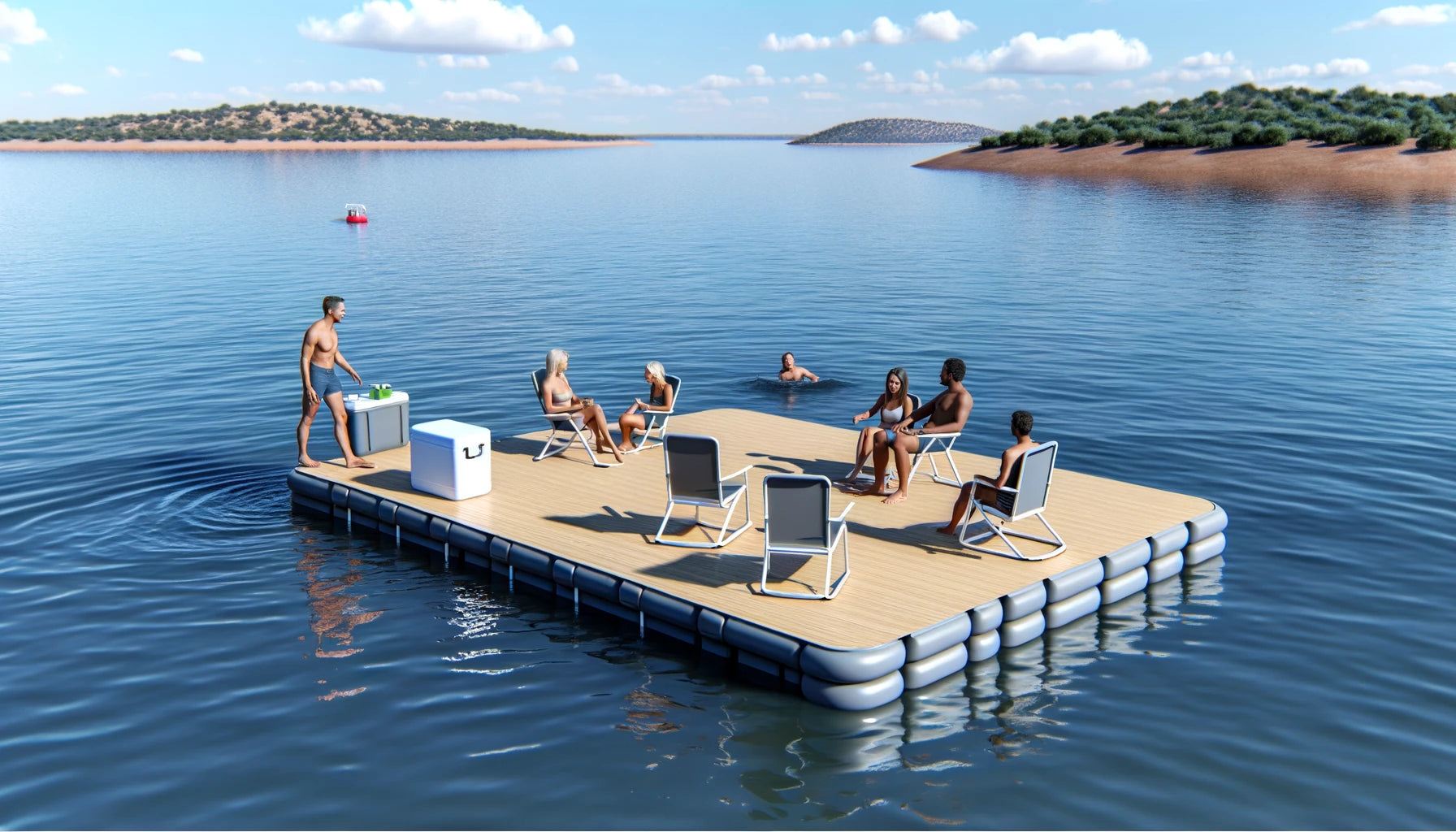Cutting-edge Floating Docks: The Future of Waterside Gain Access To and Recreation
Create the Perfect Docking Service With Floating Docks
Floating docks present a flexible remedy for a variety of maritime requirements, adjusting flawlessly to fluctuating water levels and diverse vessel kinds. As we explore the crucial components that contribute to the effectiveness of floating docks, numerous key factors pertaining to stability and upkeep will emerge, elevating concerns concerning just how to optimize your docking experience.

Benefits of Floating Docks
Floating docks offer many advantages that make them a perfect option for different maritime applications. One of the key benefits is their adaptability to altering water degrees. Unlike taken care of docks, floating docks fluctuate with the trend, guaranteeing consistent ease of access for vessels. This attribute is particularly important in areas susceptible to substantial tidal fluctuations or seasonal water level adjustments.
In addition, floating docks are typically less complicated and quicker to install compared to conventional fixed structures. Their modular style enables straightforward assembly and disassembly, assisting in maintenance and relocation when necessary. This flexibility is specifically beneficial for momentary applications or in environments where conditions might alter.
Floating docks additionally have a tendency to be much more environmentally friendly, as they reduce disturbance to the seabed and bordering aquatic communities. Their resilient nature reduces the danger of damages to marine life, promoting a healthier setting. Moreover, these docks can be tailored to accommodate different vessel dimensions, ensuring that they satisfy certain functional needs - floating docks.
Inevitably, the mix of adaptability, simplicity of installment, and ecological considerations makes floating docks a very effective remedy for a broad variety of maritime needs.
Picking the Right Materials
Picking the suitable products for floating docks is crucial to guarantee security, durability, and longevity. The choice of products directly affects the dock's performance in various ecological problems, consisting of exposure to water, sunlight, and potential wear from aquatic website traffic.
Typical materials made use of for floating docks include aluminum, timber, and high-density polyethylene (HDPE) Light weight aluminum is light-weight, corrosion-resistant, and needs very little maintenance, making it an exceptional selection for durability. Nevertheless, its preliminary cost can be higher compared to other materials.
Timber, while aesthetically appealing and offering a typical look, can be susceptible to rot and bug damages if not correctly dealt with. Utilizing pressure-treated wood or naturally resilient varieties like cedar or redwood can minimize these problems.
HDPE is a preferred option as a result of its resistance to UV rays and chemicals, along with being eco-friendly. floating dock builder. It is lightweight and available in numerous shades, enabling for modification
Eventually, the best product selection will rely on details requirements, consisting of budget plan, desired aesthetics, and ecological factors to consider. Cautious analysis of these variables will lead to a durable and successful floating dock service.
Style Factors To Consider for Stability
When designing floating docks, ensuring stability is an essential aspect that can significantly impact their functionality and safety. Stability in floating dock design is influenced by various variables, floating docks consisting of buoyancy, weight distribution, and the setup of elements. An optimal buoyancy system should use materials that give sufficient lift while minimizing weight. This balance makes certain that the dock continues to be above water, even under varying tons.
Weight circulation is crucial; uniformly distributing lots throughout the dock avoids turning and improves security. Broader styles can supply raised stability, specifically in harsh water conditions, while longer docks may require extra supports to stop sagging.
One more vital factor to consider is the environmental effect, consisting of wave action and wind. Incorporating attributes such as sidewalls or skirting can assist mitigate the impacts of environmental pressures, preserving security in negative problems. Inevitably, a mix of thoughtful design, material choice, and understanding of environmental elements will certainly generate a floating dock that meets both security and safety and security demands.
Installation Tips and Techniques

Following, safeguard the needed permits and follow regional guidelines, which may determine installation methods and ecological factors to consider. If needed, involve a certified professional experienced in floating dock installations. Usage top notch materials developed for aquatic environments to boost longevity and longevity.
When positioning the dock, straighten it alongside the coastline to help with easy accessibility. Ensure that navigate to this website the anchoring system is durable, using concrete blocks or helical supports to stabilize the dock against wind and wave activity. It's critical to account for seasonal water degree fluctuations, consisting of possible ice activity in chillier environments.
Throughout the setup, confirm the dock's floatation and stability before finalizing the anchoring. Regularly evaluate the setup for any kind of indications of wear or damage. By adhering to these pointers and methods, you can accomplish a secure, useful, and visually pleasing floating dock installation that meets your needs.
Upkeep and Treatment Guidelines
Caring and keeping for floating docks is vital to lengthening their life-span and ensuring risk-free use. Normal inspections ought to be conducted to identify any kind of indicators of wear, damages, or marine development. Look for cracks, loosened fittings, or blemished areas on the dock's surface, as these concerns can compromise structural honesty.
Cleansing is important. Utilize a pressure washer to eliminate algae, barnacles, and debris, which can build up in time. For persistent growth, think about eco friendly cleansing agents that will not damage water life.
In addition, inspect the mooring lines and supports regularly to guarantee they are secure and free from rust. Change any kind of torn or damaged lines quickly to keep stability.
During extreme climate, such as storms or freezing problems, take precautionary actions. Secure the dock with added mooring lines and, if feasible, get rid of any detachable parts to avoid damages.
Verdict
In conclusion, the execution of floating docks presents a functional and reliable docking solution ideal for different maritime applications. With correct setup and regular upkeep, floating docks can provide reputable and efficient docking experiences for a vast array of vessels.
As we explore the necessary aspects that contribute to the performance of floating docks, a number click for source of essential aspects relating to security and upkeep will arise, raising concerns about how to maximize your docking experience. Unlike dealt with docks, floating docks increase and loss with the trend, making certain constant ease of access for vessels.When developing floating docks, making certain security is an essential facet that can dramatically impact their capability and safety. Stability in floating dock layout is affected by various aspects, consisting of buoyancy, weight distribution, and the setup of elements. Eventually, a mix of thoughtful design, product choice, and understanding of ecological elements will certainly yield a drifting dock that fulfills both security and security requirements.